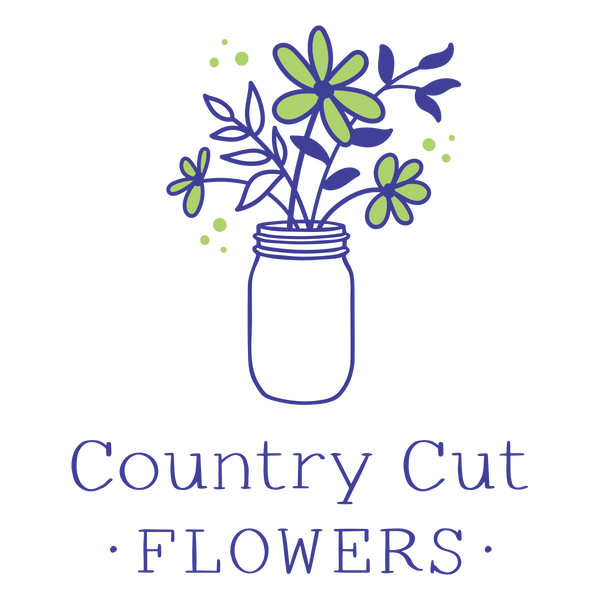Imagine the joy of stepping out your door to cut fresh flowers from your own garden. It's surprisingly easy! I detail below a few simple steps you can follow to create your own cut flower patch.

While choosing flowers may be the most fun, let’s start by stepping back and putting a little thought into the location of your garden. It is so important to choose a nice, sunny spot, with six hours or more of sun each day, and with easy access to water. Your patch does not need to be rectangular with neat rows of flowers, unless you love a neat and tidy look. You could build a kidney-shaped or other free-flowing shaped garden. The flowers could be intermixed like a perennial garden, rather than planted in rows.
If you don’t already have a garden space to work with, you’ll dig a small garden out of your sod. I recommend using a square edged shovel so that you can dig out sharper edges. A garden patch, as small as 4’ x 4’, can hold a lot of flowers. Be sure to get the grass roots out of your new garden space. And rough-up at least an inch of the bottom of the garden – it shouldn’t look like a smooth swimming pool!

Then you’ll add enough triple mix to almost fill the hole. Add another few bags of compost – this will provide extra nutrition to the soil. Flowers are hungry and will gobble up much of the soil’s nutrients. You’ll be able to get good triple mix and compost from your local garden centre.
If you have an existing garden and don’t want to start a new one, you can always add some compost and sprinkle a few annual seeds amongst your existing plants. I love to do this with a new perennial bed when the plants are small. It fills in a new garden nicely and provides an easy source of flowers for cutting.
Once you have a sense of the size of your new garden, you have the fun of choosing your seeds, bulbs and tubers. You will find seeds at your local garden centre, but if you’re reading this during the winter or early spring months, there are lots of online seed companies to choose from. Just a few of my favourite Canadian sources are Stems Flower Farm, William Dam Seeds, and Vesey’s Seeds.
Take note of whether the seeds are to be started before the last frost. If so, follow the instructions on the seed packet to start yours indoors.
If this is your first year, I’d recommend seeds and tubers that can be direct-planted into the garden. Some of my favourite direct-seed cut-flower varieties are cosmos, larkspur, zinnias, sunflowers and for tubers, you can’t beat dahlias.

Follow the directions on your seed packages. Some seeds can be planted out before the last frost while others won’t tolerate even a hint of frost. Become familiar with your last frost date. Weather apps, a farmers’ almanac, or your local garden centre can help with that.
Once again, check your seed packet for the depth to plant. Ensure your seeds don’t end up buried too deep to reach for the sun!
Give them a good soak and watch them grow. I don’t recommend weeding too soon or you may accidentally pull up the new seedlings. Wait a couple of weeks to ensure you’re pulling out weeds and not your baby flowers. If you’re still not sure, wait another week! Who doesn’t need an excuse to delay the weeding?
Flowers can be thirsty. They’ll benefit from waterings twice a week while getting established. And if it’s a hot and dry summer you may need to continue watering twice each week. But, as important as water is, you also don’t want to over-water. Too much water can lead to mildew and rot. Some drying out between each watering is beneficial.
Happy planting and flower cutting!
Note: top two photos by Maiden to Mother PhotoArt.

